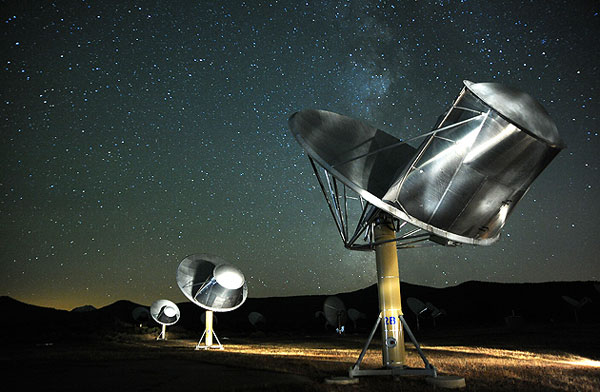Hope, perseverance, and the courage of their convictions sustain those seeking hints of alien civilizations.

Seth Shostak/SETI Institute
In March I attended a SETI Institute workshop, where a multidisciplinary group of astronomers, neuroscientists, anthropologists, philosophers, and historians pondered new approaches to expanding the search for extraterrestrial intelligence. Discussions ranged from the physics of planet formation, through the origin and evolution of life and the prospects for complex life and intelligence, to coming hunts for both biosignatures and “technosignatures” on exoplanets.
To me, the way these topics flowed together at the meeting served as a reminder that the distinction between astrobiology and SETI is completely artificial. It might exist in terms of bureaucracies and funding streams, but intellectually the quest to know how we — and living things in general — fit into the universe is all part of the same nested series of questions:
How does matter turn into living cells? Is this unlikely or inevitable? What is required of a planet to support this and the subsequent transitions to differentiated cells, multicellular life, cognition, curiosity, and technology? What planetary transitions accompanied, enabled, or were caused by these biological leaps? Should these have occurred on other types of planets that we know or suspect exist, and how would we recognize them?
For the future of SETI, the practical questions are, regrettably, as vexing as the intellectual ones. Few would deny how far-reaching success would be, but how do you maintain funding and scientific interest in a field where the payoff in any given year (or even decade) is so uncertain?
Not long ago, many deemed exobiology, along with SETI, as a fringe field, which “serious” researchers must keep at arm’s length. In the 1990s, anti-intellectual budget cutters in Congress discontinued all federal government support for SETI. In 1998, attitudes changed. This came about largely due to the discovery of possible microfossils in a meteorite from Mars and the subsequent flurry of scientific and public excitement. It turned out to be a false alarm, but exobiology was rechristened as “astrobiology” and suddenly became acceptable, well-funded, and even thought central to NASA’s mission.
In terms of government backing, however, SETI remains out in the cold. Maybe it needs its own highly credible false alarm! In the meantime, how do SETI researchers, year in and year out, remain engaged and positive?
At the workshop, you couldn’t help but notice that among the most engaged and positive participants were the now “retired” SETI pioneers Frank Drake and Jill Tarter. Their enthusiasm doesn’t depend upon immediate gratification. Both clearly believe, as do I, that we are not alone, that these efforts will ultimately pay off, and that whether we live to see it or not, we’re contributing to something extremely important and larger than ourselves.
With new technologies and search strategies coming into play, with all the exoplanets that astronomers will soon bring into focus, and with people like Tarter and Drake willing to spend their entire careers on the quest — the odds be damned — I believe we have many reasons to be hopeful.
This article originally appeared in print in Sky & Telescope's July 2018 issue.
 0
0
Comments
You must be logged in to post a comment.